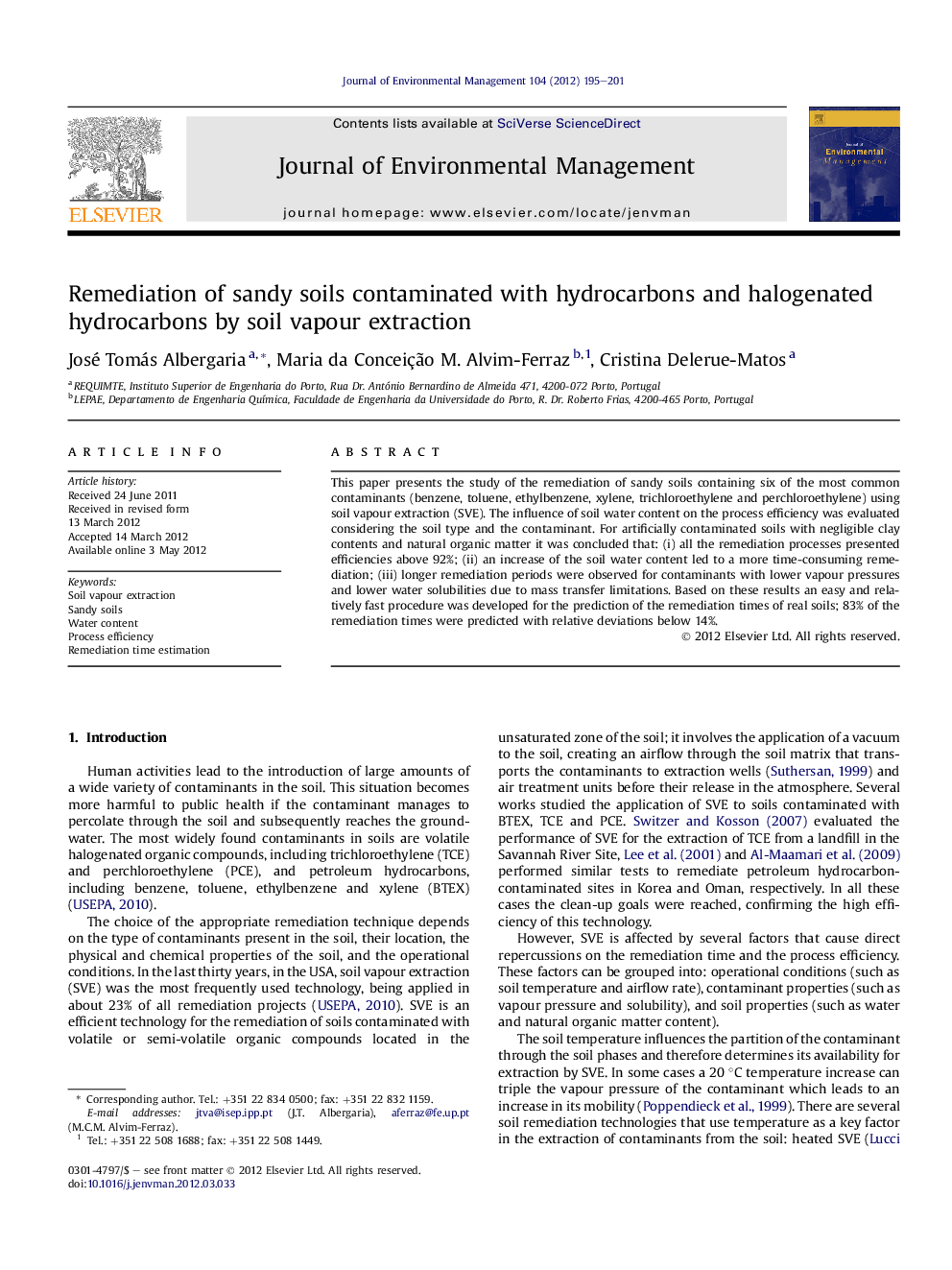| Article ID | Journal | Published Year | Pages | File Type |
|---|---|---|---|---|
| 1056803 | Journal of Environmental Management | 2012 | 7 Pages |
This paper presents the study of the remediation of sandy soils containing six of the most common contaminants (benzene, toluene, ethylbenzene, xylene, trichloroethylene and perchloroethylene) using soil vapour extraction (SVE). The influence of soil water content on the process efficiency was evaluated considering the soil type and the contaminant. For artificially contaminated soils with negligible clay contents and natural organic matter it was concluded that: (i) all the remediation processes presented efficiencies above 92%; (ii) an increase of the soil water content led to a more time-consuming remediation; (iii) longer remediation periods were observed for contaminants with lower vapour pressures and lower water solubilities due to mass transfer limitations. Based on these results an easy and relatively fast procedure was developed for the prediction of the remediation times of real soils; 83% of the remediation times were predicted with relative deviations below 14%.
► Soil vapour extractions were performed in sandy soils contaminated with hydrocarbons. ► Soil water content hinders the remediation process, depending on the contaminant. ► A new methodology for the prediction of the remediation time was developed. ► 83% of the predictions presented relative deviations below 14%.
